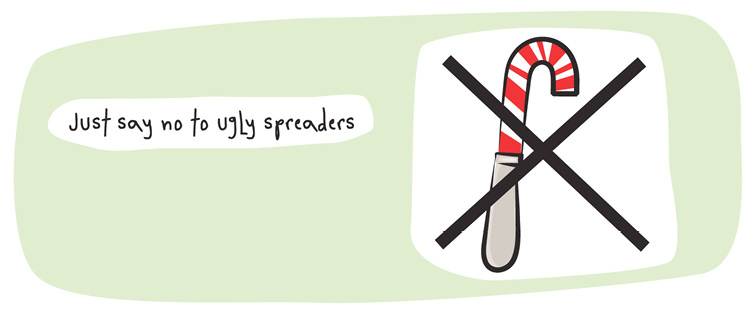

Pull out this wine cork Spreader Set for use with your cheese platter at your next gathering. This very quick project also makes a thoughtful hostess gift. Look for cheap spreader sets at a dollar store, yard sales, and after-holiday sales.
* Pliers
* Spreader set, the kind where the blade extends all the way into the handle
* Used corks (with corkscrew hole in the center)
* E6000 glue

Wine and cheese both date back to ancient times—although cheese is the newer kid on the block by about 4,000 years. Wine and cheese both reflect their place of origin and continue to mature as they age. With so much in common, their matchup is a natural.
An old wine merchant’s saying goes, “Buy on an apple and sell on cheese.” It means that wine sipped with a sweet, acidic fruit will taste thin and metallic. The same wine drunk with cheese will seem fuller and softer. While not all wines pair well with all cheeses, certain pairings are classics:
With the almost infinite number of wines and cheeses available, experimentation is a fun way to learn. These guidelines help narrow your options:
Wine Profile: Merlot
The 1990s thrust Merlot into the spotlight, as it became the easy-drinking red varietal of choice. In winemaking circles though, Merlot didn’t always have star status. It was relegated to the role of blending grape. But its mass-market appeal led to mass plantings around the world. In California alone, Merlot acreage went from 2,000 acres in 1985 to 50,000 in 2003.
Merlot’s small, dark blue grapes do not have skins as thick as those of Cabernet Sauvignon, which equates to earlier ripening and softer tannins. The Merlot grape can be traced back to first-century France, but it wasn’t named as a distinct variety until the 1800s. While Cabernet gained recognition in Bordeaux’s Médoc district, Merlot became prominent in the Right Bank Bordeaux districts of Pomerol and Saint-Emilion. Merlot is the third most planted red grape in France. Besides France, Merlot is important in California, Washington, New York’s Long Island district, northeastern Italy, and Chile.
Merlot has a reputation for relatively low acidity and softness. It makes beautiful wines all by itself or blended with others. With its soaring popularity, however, came overproduction in some areas and a tarnished image for many undistinguished wines that were shaped more by market forces than by the winemaker’s art.
Most American Merlots do not benefit much from bottle aging. It’s a “drink now” wine. Typical descriptions of Merlot flavors are plum, black cherry, spice, blueberry, and chocolate.